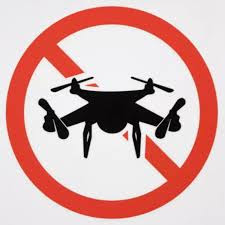Ukrainian government launches latest drone while immune to electronic interference
Ukraine has recently showcased its latest drone, which boasts advanced capabilities to operate in hostile territories far from its own borders. Moreover, this state-of-the-art drone has been engineered to effectively counter Russian jamming signal techniques.
According to Ukraine, the Backfire possesses a navigation GPS antenna and can cover a distance of 20 miles.
The utilization of UAVs in warfare has led to significant advancements in drone technology by both Ukraine and Russia.

Ukraine has recently revealed a cutting-edge unmanned aerial vehicle, which boasts the capability to operate deep within enemy territory and withstand continuous Russian interference.
The ongoing drone war between Russia and Ukraine has witnessed the latest development, driven by continuous technological advancements and the persistent presence of drones on the battlefield and in the skies above.
Mykhailo Fedorov, the Vice Prime Minister of Ukraine for Innovation, Education, Science, and Technology, revealed on Monday the creation of the Backfire drone, which he described as a "potent UAV" that can travel up to 20 miles and inflict "enormous damage" on the enemy's rear positions.
According to Ukrainska Pravda, Federov stated that the drone would assist Ukrainian troops in targeting Russian artillery, logistics centers, enemy storage facilities, and command posts.
Fedorov highlighted on X, the social media platform previously recognized as Twitter, that the primary attribute of the Backfire is its "robust GPS antenna, impervious to Russian interference" and electronic warfare. Ukrainska Pravda reported that Fedorov further stated that this antenna is "extremely difficult to disrupt" and due to the drone's "total independence, the Russians are unable to track its location and ground personnel."
The Backfire drone is set to be mass produced and will soon join Ukraine's fleet of diverse UAVs in combat. According to Fedorov, it has already accomplished over 50 successful missions in the past few months.
The Backfire represents Ukraine's most recent advancement in an intense drone conflict, which has compelled both factions to remain vigilant due to continuous technological progress. In combat, soldiers frequently depend on drones, as stated by a Ukrainian service member in September, who revealed that his unit had refrained from using rifles for six months and heavily relied on drones for engagement.
Throughout the duration of the conflict, inexpensive unmanned aerial vehicles (UAVs) have effectively neutralized tanks and armored vehicles, which are predominantly asymmetrical targets, along with virtually any mobile entity present on the battlefield. Visual evidence from the war consistently depicts first-person view (FPV) drones engaging in collisions with tanks, infiltrating open hatches in armored vehicles, stealthily approaching troops in trenches, and detonating upon impact.
The incessant buzzing above serves as a perpetual reminder of the imminent peril, indicating that an unexpected target could be struck by a detonating UAV at any given instant. Ukraine and Russia are both actively engaged in a form of drone arms competition, compelling them to explore novel technologies in their quest to outdo one another.
Operators play a crucial role in the development of specific flight and control skills for both Ukraine and Russia, alongside the advancement of autonomous drones. However, their significance also renders them vulnerable to enemy attacks, resulting in operators engaging in drone-based confrontations.
As the influence of drones expands, there has been a corresponding increase in attempts to counter them. The battlefront is now inundated with cell phone jamming technology that disrupts the navigation systems of drones. Although drones controlled by operators are generally less vulnerable to this interference and are more cost-effective in case of loss or destruction during combat, gps jamming remains a significant challenge. This highlights the crucial significance of Ukraine's new Backfire system in thwarting Russian interference, providing Ukraine with a strategic advantage to operate alongside and behind enemy lines.
